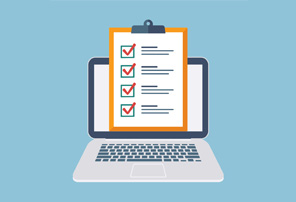RRIF FAQs: Find the Answers You Need
Published on December 11, 2020
minute read
Share:
What is a RRIF?
A RRIF is one of the options you have when you convert your Registered Retirement Savings Plan (RRSP) or your employer's Registered Pension Plan (RPP) to an income plan in your retirement years. Within a RRIF, your investments can continue to grow on a tax-deferred basis, while you receive a regular stream of income through the withdrawals you are required to make annually from the plan.
Can I transfer money from a regular savings account into my RRIF?
No, you cannot contribute or transfer money from a regular (non-registered) account into your RRIF.
What happens to my RRIF when I die?
The funds in your RRIF become part of your taxable income on the date of your death and are included in your final tax return. There are several potential tax-deferral strategies that can reduce your taxes at death; for example, if the beneficiary of your RRIF is a spouse or child/grandchild under 18 who was financially dependent on you at the time of your death. In those cases, the funds in your RRIF may be transferred to their RRSP or RRIF, or used to purchase an annuity. Different rules apply for different beneficiaries, so you should speak to a tax advisor for guidance on setting up a beneficiary.
Opening an Account
Do I have to convert my RRSP to a RRIF at age 71?
By the end of the year you turn 71, you must convert your RRSP to an income option such as a RRIF or an annuity (not offered at RBC Direct Investing). You can also cash out your RRSP, however the entire amount is considered taxable income in the year you withdraw it, and the funds no longer benefit from tax-deferred investment growth.
Can I convert my RRSP to a RRIF before I turn 71?
Yes, you can convert your RRSP to a RRIF before age 71 if you need to draw income from it. If you are a Canadian resident, you do not have to pay withholding tax on the minimum annual payment. If you withdraw funds from your RRIF that exceed the minimum annual payment there will be withholding tax on the excess amount.
Is there a minimum amount needed to set up a RRIF?
There is no minimum amount to open a RRIF with RBC Direct Investing.
Can I have a RRIF and an RRSP?
Yes. You can choose to have both an RRSP and a RRIF. However, by the end of the year you turn 71 you must convert your RRSP to a RRIF or other retirement income option.
Can I have more than one RRIF?
Yes. Just as you can have more than one RRSP account, you can have multiple RRIFs. However, it may be more convenient to have one as it makes it easier to manage and keep track of your minimum annual withdrawals.
I have a few RRSPs; should I convert each one to a RRIF?
While it's mandatory to convert from an RRSP to an income option by the end of the year you turn 71, not all of your RRSPs need to convert to a RRIF. You may also choose to direct funds to an annuity (not offered at RBC Direct Investing).
I have a Locked-In Retirement Account (LIRA) with money transferred from a pension plan of a former employer. Can I convert this to a RRIF?
There are special options available for converting pension funds from a LIRA or locked-in RRSP, which may include transferring funds to a Life Income Fund (LIF) or Prescribed Retirement Income Fund (PRIF).
Are there any maintenance fees for RRIFs?
At RBC Direct Investing there is no maintenance fee if your combined assets are $15,000 or more across all of your RBC Direct Investing accounts. If your combined assets are less than $15,000 across all of your RBC Direct Investing accounts, you will be charged one maintenance fee of $25 per quarter (split across all of your accounts). However, there are a number of additional ways to have this fee waived. For full details please refer to the latest on pricing here.
Clients can open a maximum of 10 accounts for a combined maintenance fee of $25/quarter. Additional maintenance fees will apply if a client opens more than 10 accounts.
Investment Options
What happens to my investments in my RRSP when I convert to a RRIF?
Your investments can be transferred from your RRSP "as is" directly to your RRIF without having to liquidate them. There are no tax implications as long as your transfer is direct and your assets remain in the RRIF.
What if I am still earning money when I open a RRIF?
Your earnings have no impact on your RRIF. You cannot make contributions to a RRIF, but you may be able to reduce your immediate income taxes by making contributions to an RRSP as long as you are under age 71 and have unused RRSP contribution room available.
What investments can I hold in my RRIF?
RRIFs are similar to RRSPs in that they offer multiple investment options (such as stocks, bonds, GICs, mutual funds and ETFs).
Are there any foreign content restrictions?
No, you may hold any amount of qualified foreign investments in your RRIF.
Will the types of investments I hold impact the timing of my RRIF withdrawals?
They can, yes. It's a good practice to ensure the funds are available in your account at the time the withdrawal payment goes through. Holding a variety of investments in your RRIF, where you can choose the investments you'll want to have your income payments taken from, may allow you to meet your shorter-term income needs while leaving the balance of your investments to grow in your RRIF on a tax-deferred basis.
Withdrawals
How do withdrawals from RRIFs work?
Starting in the year after you open your RRIF, you must withdraw a minimum annual amount from your RRIF, which is taxable as income. This amount is determined by the federal government using a calculation based on your age and the dollar value of your RRIF on December 31 of the previous year. Visit www.canada.ca for more information on RRIF withdrawals.
Do I have to withdraw money from my RRIF right away?
In the first year that your RRIF is opened, you are not required to make a withdrawal. However, you must make at least your minimum withdrawal in the following calendar year.
Can I choose the frequency of my RRIF withdrawals?
Withdrawals may be made monthly, quarterly, semi-annually or annually. You can choose the frequency when you complete your application to open your RRIF.
Can I withdraw more than the annual minimum amount?
You may elect to receive more than the minimum amount. However, any amount above the minimum is subject to withholding taxes. Withholding taxes differ depending on your province of residence, so speak to a tax advisor who is familiar with the tax rules for your province.
How do I know what my minimum withdrawal is?
The federal government sets the minimum amount that must be withdrawn every year and it’s based on your age and the dollar value of your RRIF at the start of the year.
If you have a RRIF account at RBC Direct Investing, it’s easy to find this information. At the top of your Holdings page, a RRIF Details link takes you where you need to go to view your minimum withdrawal requirements and payment details.
For more information on RRIF withdrawals, visit www.canada.ca.
Can I base my RRIF withdrawals on my younger spouse's age?
Yes, you can use your spouse or common law partner's age to calculate your minimum withdrawal amount, thereby lowering your minimum amount and tax bill. You don't have to have a Spousal RRIF in place but you must call 1-800-769-2560 to have this set up before your first payment as this option cannot be changed later. This is a strategy if you have other sources of retirement income and want to keep your investments growing within your RRIF for as long as possible.
Do I have to make RRIF withdrawals if I don't need the money?
You are required to withdraw the minimum annual amount from your RRIF, whether or not you need that income, and it is fully taxable.
If there is an unused portion of the funds you withdrew from your RRIF, you may choose to contribute the money to a Tax-Free Savings Account (TFSA), if you have the contribution room, to continue the tax-free growth of your investments (as you cannot redeposit them to your RRIF). You cannot move your RRIF payments directly into a TFSA.
In addition to cash, withdrawals can also be made in "in kind" – meaning securities can be withdrawn at their fair market value from a RRIF and transferred to a non-registered account without selling them. You'll have to include the value of the withdrawal as income at tax time (and if the value of the securities exceeds the minimum annual amount, withholding taxes will apply).
What is withholding tax and do I have to pay?
Withholding tax is the amount of income tax that RBC Direct Investing withholds from payments withdrawn from your account. The amount of tax withheld is remitted to the CRA on your behalf and is reported to you on a T4RIF slip after the end of each calendar year to help you prepare your tax return. RBC Direct Investing is only required to withhold taxes on withdrawn amounts that are in excess of the annual minimum payment.
However, you can choose to have tax withheld from your annual minimum payments, or choose to have a higher rate of withholding tax applied to your amounts in excess of your annual minimum payment, in order to manage future taxes owing on your tax return. Please contact a tax professional for more information.
This article is part of a guide to understanding RRIFs. Explore more investing guides in the Investing Academy.
The information provided in this article is for general purposes only and does not constitute personal financial or tax advice. Please consult with your own professional advisor to discuss your specific financial and tax needs.
RBC Direct Investing Inc. and Royal Bank of Canada are separate corporate entities which are affiliated. RBC Direct Investing Inc. is a wholly owned subsidiary of Royal Bank of Canada and is a Member of the Canadian Investment Regulatory Organization and the Canadian Investor Protection Fund. Royal Bank of Canada and certain of its issuers are related to RBC Direct Investing Inc. RBC Direct Investing Inc. does not provide investment advice or recommendations regarding the purchase or sale of any securities. Investors are responsible for their own investment decisions. RBC Direct Investing is a business name used by RBC Direct Investing Inc. ® / ™ Trademark(s) of Royal Bank of Canada. RBC and Royal Bank are registered trademarks of Royal Bank of Canada. Used under licence.
© Royal Bank of Canada 2025.
Any information, opinions or views provided in this document, including hyperlinks to the RBC Direct Investing Inc. website or the websites of its affiliates or third parties, are for your general information only, and are not intended to provide legal, investment, financial, accounting, tax or other professional advice. While information presented is believed to be factual and current, its accuracy is not guaranteed and it should not be regarded as a complete analysis of the subjects discussed. All expressions of opinion reflect the judgment of the author(s) as of the date of publication and are subject to change. No endorsement of any third parties or their advice, opinions, information, products or services is expressly given or implied by RBC Direct Investing Inc. or its affiliates. You should consult with your advisor before taking any action based upon the information contained in this document.
Furthermore, the products, services and securities referred to in this publication are only available in Canada and other jurisdictions where they may be legally offered for sale. Information available on the RBC Direct Investing website is intended for access by residents of Canada only, and should not be accessed from any jurisdiction outside Canada.
Inspired Investor brings you personal stories, timely information and expert insights to empower your investment decisions. Visit About Us to find out more.










